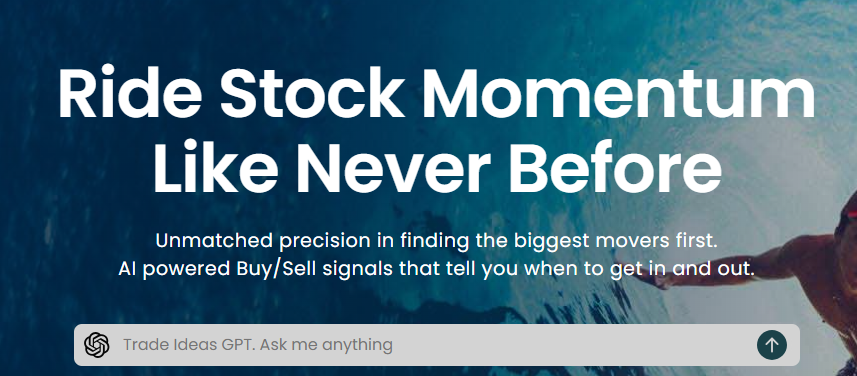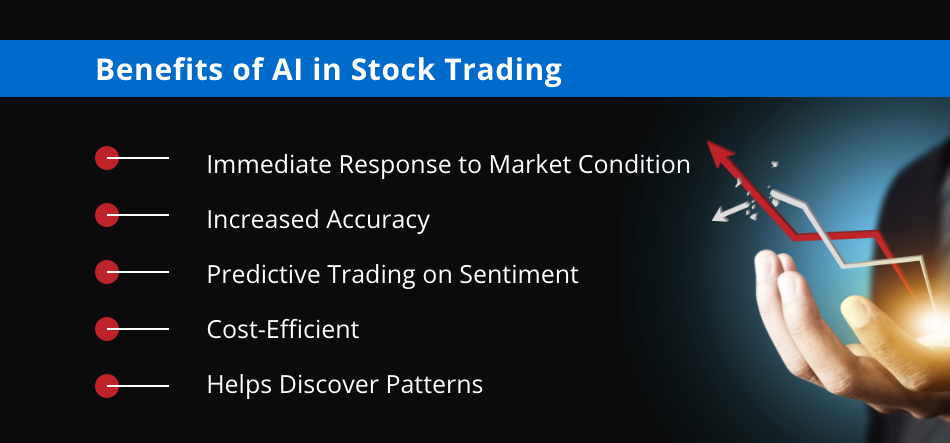20 Recommended Suggestions For Deciding On AI Stock Trading Analysis Sites
20 Recommended Suggestions For Deciding On AI Stock Trading Analysis Sites
Blog Article
Top 10 Tips For Evaluating The Customer Support Offered By Ai Stock Analysing Trading Platforms
Support for customers is essential when choosing an AI stock-predicting/analyzing trading platforms. Support that is prompt and reliable will make all the difference in to solve issues, increase the use of the platform, and ensure the smooth running of trading and so on. Here are 10 top ways to evaluate the level of customer service offered by these platforms.
1. Review Support Accessibility
24/7 support: Find out whether the platform that has 24 hour assistance. This feature is particularly important for markets around the world and real-time trades.
Business hours: If 24 hour support isn't available, ensure support is available during your business hours.
Check for holiday coverage.
2. Test Response Times
Initial response: Test the support team by submitting an easy test question.
Resolution time: Check the time it takes to resolve the issue, not just acknowledge them.
Live chat is available Make sure you test the response speed and the effectiveness.
3. Evaluate Support Channels
Multiple channels: Make sure that the platform offers support in different channels (e.g. phone and email, live chat as well as social media).
Find out the availability and the reliability of your preferred support channels (e.g. chat, phone).
Self-service options are offered You can search for a complete FAQ, a forum for community members or a vast knowledgebase to solve your problems fast.
4. Examine the Quality of Support
Support agents must be well-informed regarding trading platforms, technical concerns, and platforms.
Problem-solving: Assess whether the support agent can solve complicated issues effectively, or escalate these appropriately.
Professionalism - See whether interactions with support personnel are friendly, helpful, and professional.
5. Find Account Managers who are Dedicated
Support Premium: Check if institutional users or higher-tiered plans are able to access account managers.
Account managers should provide individualized support and advice that is proactive.
Building relationships: Make sure your account managers are in contact to establish relationships that last for a long time.
Review the Documentation Support
Knowledge base: Make sure the platform has a an organized and searchable knowledge base that includes tutorials, guides and troubleshooting suggestions.
Video tutorials: Find out if there are any video tutorials available.
API documentation: If you're a developer check if the platform offers an easy-to-read and thorough API documentation.
7. Examine the Community Support and Peer Support
User forums: See if a platform has forums or communities for users to share tips and ideas.
Social media forums: Find unofficial groups on social media (e.g. Reddit. Facebook. LinkedIn) that discuss the platform.
Community engagement: Find out if the platform's team actively participates in discussions with the community or forums.
8. Evaluate Escalation Processes
Issue escalation - Make sure that there's a defined procedure for elevating unresolved concerns to support or management levels.
Follow-up. Make sure whether support is following up when the issue is resolved.
Feedback loop: Verify that the platform is collecting feedback from users in order to improve support services.
9. Test Support for Critical Situations
Contact customer service during times of high-volatility and check how they respond.
Issues with technical aspects: You are able to simulate a technical issue (e.g. login problems or data differences) to see the response of our support team.
Trade execution: Find out whether the support staff can assist with urgent issues related to trade (e.g. delayed execution, unsuccessful orders).
Review User Feedback to find Support
Reviews on the internet: Look up user reviews on platforms like copyright, G2, or Reddit to assess general satisfaction with support.
Testimonials: Look for testimonials or case studies highlighting positive experiences with support.
Complaints: Find out how the platform handles complaints and negative feedback about the support.
Bonus Tips:
Support during the trial period Support during trial period: You can test the capabilities of the platform using the demo or trial period.
Support for different languages: If not an English native, make sure to check if there is a support service available.
Training and Onboarding Check if the platform provides training sessions or even onboarding to help new users beginning their journey.
Use these guidelines to evaluate the customer support provided by AI stock trading platforms. Select a platform that offers prompt, efficient and prompt support. Customer support that is responsive and friendly can improve the overall experience. Have a look at the most popular ai stock trading bot free for blog info including options ai, ai for trading, ai investment platform, investing ai, ai investing, ai stock trading, ai trade, market ai, ai stock market, trading ai and more.
Top 10 Tips On Assessing The Risk Management Of Ai Stock Forecasting/Analyzing Trading Platforms
A trading platform that utilizes AI to predict/analyze stocks must have a robust risk management process. This can protect your capital investment and reduce any possible losses. Platforms with strong risk management tools can assist you in navigating market volatility and make an the right decision. Here are the top 10 tips to evaluate the risk management capabilities of these platforms:
1. Review Stop-Loss and take-profit features
Flexible levels: Ensure that the platform lets you determine take-profit and stop-loss limits for specific strategies or trades.
Find out if your trading platform supports trailing stop that adjusts itself automatically when the market shifts towards you.
Find out if your platform permits you to place stop-loss orders which guarantee closing your trade at the price you have specified, even in volatile markets.
2. Assessment Position Sizing Instruments
Fixed amount: Make sure that the platform allows you to establish the size of a position based upon the fixed amount of money.
Percentage: Check whether you are able to define your position sizes as proportion to the amount of your portfolio. This will allow you to control risk more effectively.
Risk-reward rate: Check to see if it is possible to define the risk-reward percentages for specific trades or strategies.
3. Check for Diversification Support
Multi-assets trade: Ensure that the platform supports trading across a variety of asset classes (e.g. ETFs, stocks, options, forex and more.) to diversify your portfolio.
Sector allocation check to find out if there are tools that allow for monitoring and managing exposure to the sector.
Diversification of geographical areas - Make sure that the platform allows trading on international markets. This will help diversify geographical risk.
4. Controlling leverage and margins
Margin requirement: Make sure that the platform clearly discloses any margin requirements for leveraged trades.
Check for limits on leverage. You can utilize this feature to control the risk you take.
Margin calls: Check if the platform is able to provide timely margin call notifications to avoid account liquidation.
5. Review the Risk Analytics Reporting
Risk metrics: Make sure the platform offers important risk indicators for your portfolio (e.g. Value at Risk (VaR) Sharpe ratio and drawdown).
Scenario Analysis: Find out if your platform allows you the capability of generating different market scenarios to assess possible risks.
Performance reports - Check that the platform has detailed performance reporting, including the risk-adjusted returns.
6. Check for Real-Time Risk Monitoring
Portfolio monitoring - Ensure that the platform you select provides real-time monitoring so that your portfolio is secure.
Alerts and notifications. Ensure that the platform sends out real-time alerts when certain risk-related events occur (e.g. Margin breaches, triggers for stop-loss orders).
Review the dashboards for risk. If you want to have a comprehensive view of your risks, make sure that they're configurable.
7. Assess Stress Testing and backtesting
Stress testing - Make sure that your platform allows you to stress test your portfolios and strategies in extreme market conditions.
Backtesting Check to see if your platform supports backtesting using data from the past to evaluate the performance and risk.
Monte Carlo simulators: Verify that the platform uses Monte Carlo to simulate a variety of possible outcomes in order for you to evaluate the risk.
8. Risk Management Regulations Compliance Assessment
Regulatory Compliance: Verify the compliance of the platform with applicable Risk Management Regulations (e.g. MiFID II for Europe, Reg T for the U.S.).
Best execution : Check to determine if your platform is following the best execution practices. This ensures that trades are executed at the most efficient price, minimising slippage.
Transparency Check the platform's transparency and clarity in the disclosure of risks.
9. Verify the risk parameters controlled by the user.
Custom risk rules: Ensure that the platform permits you to set up your own risk management rules (e.g. the maximum daily loss, or maximum position size).
Automated risk control: Ensure that the platform is able to enforce the risk management guidelines automatically, based on your predefined criteria.
Manual overrides: Verify that your platform allows manual overrides in emergency situations.
10. Review User Feedback and Case Studies
User reviews: Study user feedback to gauge the effectiveness of the platform in risk management.
Case studies: Look for testimonials or case studies that showcase the platform's strengths in risk management.
Community forums - Search to see if the platform offers a user community that is active, and where traders are able to share their risk management strategies.
Bonus Tips
Free Trial: Test the features of the platform to manage risk in real situations.
Customer Support: Verify that the platform is able to offer a full support service in the event of any risk management-related concerns or questions.
Educational resources: Determine if you can find any educational materials on best practices in managing risk.
With these suggestions to evaluate the risks management capabilities of AI stock predicting/analyzing trading platforms and ensure you select the one that can protect your capital and minimize possible losses. To manage turbulent markets and attain long-term trading successes it is essential to use a robust software for managing risk. Check out the top ai in stock market for site examples including free ai stock picker, ai in stock market, stock predictor, can ai predict stock market, trading ai tool, ai copyright signals, how to use ai for copyright trading, ai copyright signals, how to use ai for copyright trading, ai investment tools and more.